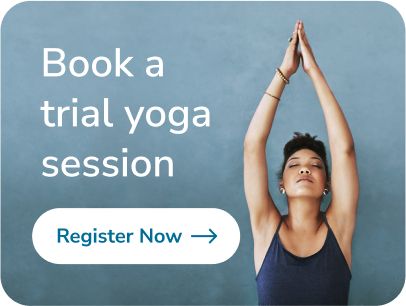Written by Dr. Anusree Muraleedharan
Medically reviewed by Dr. Abirami
Updated on May 31, 2025
A Step-By-Step Guide To Practising Yoga Nidra: 8 Steps To Reset And Refresh Your Brain
Yoga Nidra can be stated as the chill cousin of guided meditation, where you let yourself drift into a dream-like state. Unlike meditation, which requires focus, Yoga Nidra is beginner-friendly and primarily focused on relaxing the body.
So, it is ideal for people who want the benefits of meditation but have difficulty maintaining their focus.
Jump to section
How Does Yoga Nidra Work?
When practised properly, Yoga Nidra or yogic sleep cycles the mind through different brain waves, lowering beta waves (waves that reflect an actively working mind) and increasing alpha ( a state of relaxed alertness), theta (light sleep with dreams) and delta (deep, dreamless sleep) waves.
What Are The Steps Involved In Yoga Nidra?
These involve,
- Preparation Of The Body
- Setting An Intention Or Affirmation
- Visualisation
- Breath Awareness
- Opposite Sensations
- Internal Visualisation
- Repeating The Set Intention Or Affirmation
- Ending- Bringing Back Consciousness To Surroundings
What are you waiting for? Let’s learn how to practise Yoga Nidra.
P.S.- Before beginning the session, take a minute to address your intention for the session. It may be about achieving your goal, gaining self-confidence or needing a complete mental reset after a hectic day. Knowing your goals beforehand makes the session more meaningful and easier.
Ready? Let’s start.
1. Body Preparation:
Lie down in Savasana (supine position with palms apart from the body and facing upwards, legs slightly apart, and body relaxed). Relax in the position and close your eyes. Once you are fully relaxed, proceed to the next step,
Pro-tip: For those who find lying supine challenging, you can use a recliner or any other relaxing posture. The key is to allow your body to fully relax, so go for the position you are most comfortable in!
2. Setting Intention:
Now, recall the intention you decided beforehand. Visualise the affirmation clearly in your mind. Now, repeat the affirmation thrice with full determination.
Tip: Keep the auto-suggestions short and positive. This will help you to avoid confusion while wording the affirmation. Also, try to limit them to one or two auto-suggestions per session to prevent overwhelming your mind.
3. Visualisation:
Next, guide your awareness through each body part and relax them individually. Start from one side of the body, like the tip of your right hand - relax it, then move to the palm of your right hand, then to your right forearm, and so on. Visualise each muscle of each body part relaxing. Continue this process of body scan until the whole body is relaxed.
Tip: For those who have trouble relaxing their body, try tensing the muscle first and then releasing it. This will help to achieve full relaxation of the particular muscles. Repeat the exercise throughout the body.
4. Breath Awareness:
Become aware of your breath flowing in and out. Feel the natural flow of breath. Gradually, shift the focus to the breath flow through your nostrils, chest and abdomen sequentially. Then, begin to count the number of breaths.
P.S.: You may lose track of your breath count. Don’t worry- relax and start again. The goal is to maintain awareness of breath and to relax. If other thoughts drift into your mind, acknowledge them and gently bring awareness back to the breath.
5. Opposite Sensation:
Now imagine your body surrounded by comfortable warmth. Feel it to the maximum extent. Feel the warmth seep into your body. Then, switch to the sensation of cold. Again, repeat the process. Feel every sensation deeply. Next, alternate between feelings, for example, feelings of sadness and joy. Feel them in your whole body fully, one by one.
Note: You may have difficulty feeling the sensations and emotions to the maximum extent in initial practice sessions. With practice, it gets easier.
6. Visualisation:
Now, concentrate on the dark part in front of closed eyes. In yogic practices, this is called Chidakasha. Visualise scenes like waves on the beach or any particular situation to your liking at the Chidakasha.
7. Sankalpa:
Once again, affirm your intentions set in the second stage thrice. Do it with full faith and optimism.
8. End:
Gradually bring your awareness to your surroundings. Notice the various sounds around you. Take your time to relax, and when you are finally ready, stretch your body, wiggle your fingers and toes, and slowly rise to a seated position. Once comfortable, open your eyes.
Are You Feeling Relaxed? Great!
Daily practice of yoga nidra is immensely helpful in this busy lifestyle. Studies have shown its effectiveness in reducing anxiety, depression, stress, tension headaches, improving sleep, rebalancing hormones and so on.
Fun Facts
‘It’s Used By The Military’
The U.S. military incorporated yoga nidra into reliability training programmes to help young soldiers manage stress and reduce PTSD symptoms. It is referred to as iRest in military settings.
‘Athletes Use It For Performance Enhancement’
Elite athletes use yoga Nidra to speed recovery, reduce stress, and improve mental conditioning.
Wrapping Up
Yoga Nidra is a powerful practice that can help reset and refresh your mind after a busy day. Over time, these affirmations condition your mind and help to build resilience, things necessary in today’s ever-changing, fast-paced life. An added benefit is that you do not require a gym membership, equipment, or even your yoga pants to practise yoga Nidra. Instead, you can simply relax and ‘sleep your way to happiness!’
So, what are you waiting for? Grab your bed sheet and get ready for a happy ‘me’ time.
Follow Nirva’s blog for more such content on mental and physical well-being through Ayurveda and Yoga.
Frequently Asked Questions
You can listen to audio clips guiding you through the steps. The added benefit is that you can tune out the chaos in the outer world using the earphones.
There are many free audio available on YouTube on Yoga Nidra.
Falling asleep during the process is still considered a success as you have relaxed your body. Gradually, with practice, you will be able to stay in the state of Yoga Nidra without falling asleep. The key is to practise it daily.
If you are a beginner, start with 5 minutes and gradually increase the duration to 15 minutes, then to 30 minutes or more. Experienced practitioners even practise it for 1 to 2 hours daily. Gradually, you can adjust the time based on your comfort.
The beauty of Yoga Nidra is that you can practise it whenever you like. In the morning, it gives you a fresh start to your day; when stressed, it helps you to calm down and focus; at night, it can lead to a calm sleep. Choose a time based on your goals and schedule.
While skipping a day will not set you back, daily practice will prevent you from carrying any residual stress or negative emotions to the next day. It also helps you to manifest your intentions effectively.
Dr. Anusree Muraleedharan
An Ayurvedic physician and researcher, who specialised in Ayurvedic medicine manufacturing Dr. Muraleedharan believes in the power of words.She is passionate about inspiring others through her writings about lifestyle corrections, diet and yoga. Her expertise extends to new product development and pharmaceutical research. As a dedicated content writer, she shares her Ayurvedic knowledge widely, aiming to bridge the gap between patients and science of Ayurveda and promoting the benefits of Ayurveda to create a positive impact to mankind for a healthy today and tomorrow.

8 Effective Face Yoga Exercises to Reduce Marionette Lines Naturally
15 Foods to Avoid with Gallbladder Issues & Best Foods for Gallbladder Health
Understanding Your Gut Type and Its Impact on Health
4 Simple Ways to Manage Hot Flashes at Work
3 Stretching exercises for desk workers - Get Relief from Neck, Back and Wrist Pain









